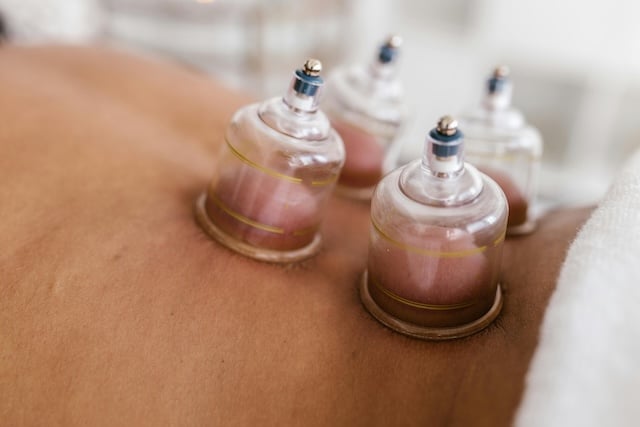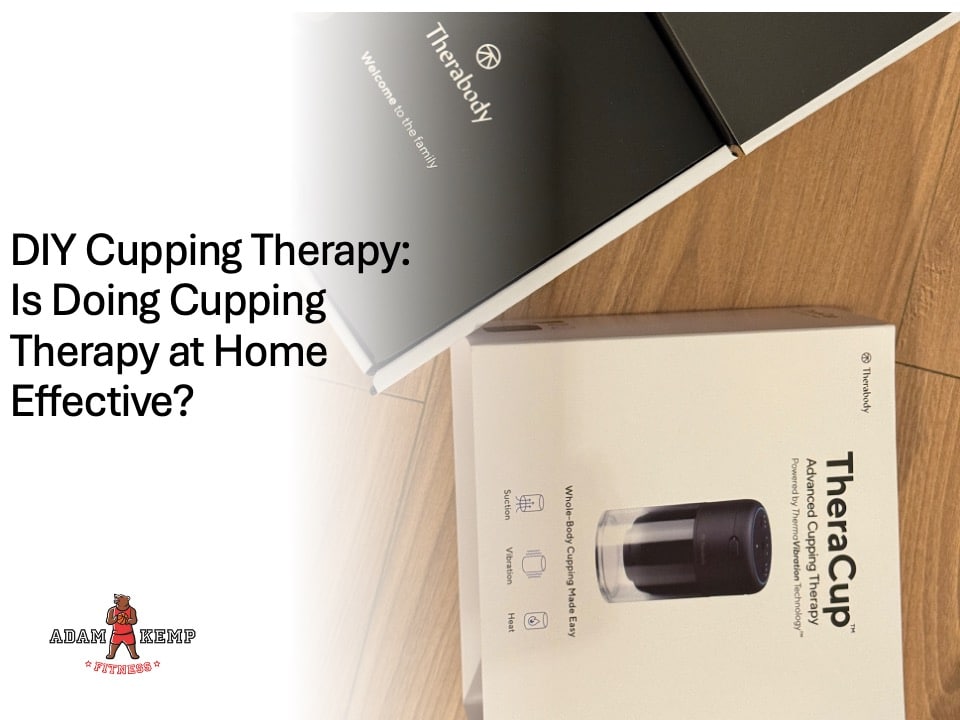DIY Cupping Review: Is at-Home Cupping Safe & Effective?
Cupping therapy, an ancient practice dating back to the Egyptians and Greeks, has found a new life in modern wellness routines due to advancements in technology that make cupping accessible to anyone.
Personally, I’ve found the TheraBody TheraCup to be incredibly simple and valuable, and I have not had any issues with their DIY cupping solution.
However, the effectiveness of at-home cupping depends on correctly using the device and understanding the technique.
DIY cupping can effectively relieve muscle soreness, reduce stress, and boost overall wellness,
What is Cupping?

Cupping therapy is an ancient practice where suction cups are applied to the skin to create a vacuum effect.
This process involves placing cups on specific areas of the body and using heat or mechanical suction to create a partial vacuum.
The suction pulls the skin and underlying tissues into the cup, increasing blood flow to the area.
This enhanced circulation helps reduce inflammation, alleviate muscle tension, and promote healing by drawing out toxins and encouraging nutrient-rich blood to nourish the tissues.
What is DIY Cupping?
DIY cupping refers to performing cupping therapy at home using specially designed, user-friendly devices.
These modern cupping tools, such as the TheraBody TheraCup, allow individuals to enjoy the benefits of traditional cupping without needing professional assistance.
The vacuum created by the DIY cupping devices stimulates blood flow, reduces muscle soreness, alleviates stress, and enhances overall wellness, making it a convenient and effective method for personal care.
To help reduce the appearance of red marks or bruising after a cupping therapy session, gently apply a cool compress to the affected areas for 10-15 minutes. This can help soothe the skin and minimize discoloration. Additionally, keeping the skin well-hydrated with a natural body moisturizer, such as aloe vera gel or coconut oil, can promote faster healing.
Benefits of DIY Cupping
DIY cupping offers a range of benefits that make it an appealing addition to any wellness routine.
Here are some of the key benefits of DIY cupping:
Improved Recovery & Reduced Soreness
DIY cupping is particularly effective for relieving muscle soreness.
The suction created by the cups increases blood flow to the targeted areas, helping to reduce muscle tension and accelerate recovery after intense workouts or physical activities.
Likewise, athletes and active individuals can benefit from the accelerated recovery that cupping offers. By increasing blood flow and reducing inflammation, cupping helps speed up the healing process for minor injuries and muscle strains.
Pain Reduction
Cupping can help alleviate chronic pain, such as back pain, neck pain, and joint pain. By improving circulation and promoting the release of endorphins, cupping can reduce pain and improve mobility in affected areas.
Stress Relief
The relaxing effect of cupping therapy can help reduce stress and anxiety. The process of cupping promotes a sense of relaxation and well-being, which can be beneficial for mental health.
Improved Skin Health
Cupping can also enhance skin health by increasing blood flow to the skin and promoting the removal of toxins. This can improve the appearance of the skin, making it look more radiant and healthy.
Better Immune System
The improved circulation and detoxification effects of cupping can help boost the immune system. Regular cupping sessions can aid in the removal of toxins from the body, helping to improve overall health and resilience against illnesses.
Potential Risks and Side Effects
While DIY cupping offers numerous benefits, it’s essential to be aware of potential risks.
Common side effects include temporary skin irritation and bruising, which usually fade within a few days.
If the skin and devices are not clean, improper use can lead to burns, blisters, or infections.
Individuals on blood-thinning medications or with bleeding disorders should consult a healthcare professional before trying cupping.
Additionally, some people may experience dizziness, nausea, or allergic reactions to the materials used in cupping devices.
What is the Best DIY Cupping Device? (2025)
The TheraBody TheraCup stands out as a top choice for DIY cupping therapy due to its innovative features that enhance the traditional cupping experience.
I have also rated it as one of the best self-massage tools of 2024, and I believe it is a great option for a wide variety of people.
Unlike traditional silicone or glass cups, the TheraCup integrates advanced technology for more precise control over suction levels and duration.
This allows for a more tailored therapy session, catering to specific needs and preferences.
Additionally, its design facilitates ease of use across the entire body, making it accessible for self-application.
While it may be more expensive than conventional cupping sets, the TheraCup’s versatility, ease of use, and technological advancements justify the investment for those seeking an effective, at-home cupping solution.
Last update on 2025-04-16 / This article includes affiliate links/Images via Amazon Product Advertising API. I may earn commissions on purchases made through these links.




